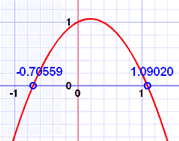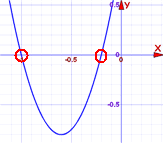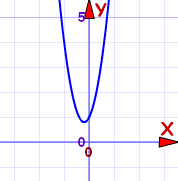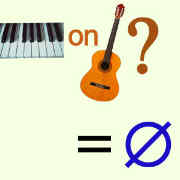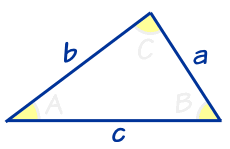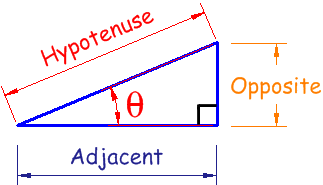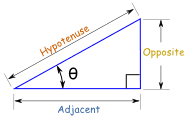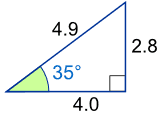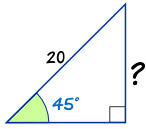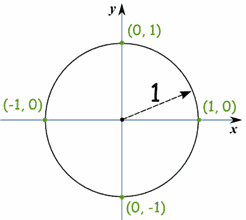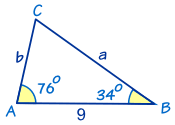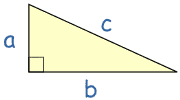First we specify a common property among "things" (this word will be
defined later) and then we gather up all the "things" that have this
common property.
For example, the items you wear: shoes, socks, hat, shirt, pants, and so on.
I'm sure you could come up with at least a hundred.
This is known as a
set.
Or another example is types of fingers.
This set includes index, middle, ring, and pinky.
|
|
 |
So it is just things grouped together with a certain property in common.
Notation
There is a fairly simple notation for sets. We simply list each
element (or "member") separated by a comma, and then put some curly
brackets around the whole thing:
The curly brackets { } are sometimes called "set brackets" or "braces".
This is the notation for the two previous examples:
{socks, shoes, watches, shirts, ...}
{index, middle, ring, pinky}
Notice how the first example has the "..." (three dots together).
The three dots ... are called an ellipsis, and mean "continue on".
So that means the first example continues on ... for infinity.
(OK, there isn't really an infinite amount of things you
could wear, but I'm not entirely sure about that! After an hour of
thinking of different things, I'm still not sure. So let's just say it
is infinite for this example.)
So:
- The first set {socks, shoes, watches, shirts, ...} we call an infinite set,
- the second set {index, middle, ring, pinky} we call a finite set.
But sometimes the "..." can be used in the middle to save writing long lists:
Example: the set of letters:
{a, b, c, ..., x, y, z}
In this case it is a finite set (there are only 26 letters, right?)
Numerical Sets
So what does this have to do with mathematics? When we define a
set, all we have to specify is a common characteristic. Who says we
can't do so with numbers?
Set of even numbers: {..., -4, -2, 0, 2, 4, ...}
Set of odd numbers: {..., -3, -1, 1, 3, ...}
Set of prime numbers: {2, 3, 5, 7, 11, 13, 17, ...}
Positive multiples of 3 that are less than 10: {3, 6, 9}
And the list goes on. We can come up with all different types of sets.
There can also be sets of numbers that have no common property, they are just
defined that way. For example:
{2, 3, 6, 828, 3839, 8827}
{4, 5, 6, 10, 21}
{2, 949, 48282, 42882959, 119484203}
Are all sets that I just randomly banged on my keyboard to produce.
Why are Sets Important?
Sets are the fundamental property of mathematics. Now as a word
of warning, sets, by themselves, seem pretty pointless. But it's only
when we apply sets in different situations do they become the powerful
building block of mathematics that they are.
Math can get amazingly complicated quite
fast. Graph Theory, Abstract Algebra, Real Analysis, Complex Analysis,
Linear Algebra, Number Theory, and the list goes on. But there is one
thing that all of these share in common: Sets.
Universal Set
 |
|
At the start we used the word "things" in quotes. We call this the universal set. It's a set that contains everything. Well, not exactly everything. Everything that is relevant to our question. |
 |
|
Then our sets included integers.
The universal set for that would be all the integers. In fact, when
doing Number Theory, this is almost always what the universal set is, as
Number Theory is simply the study of integers. |
 |
|
However in Calculus (also known as real analysis), the universal set is almost always the real numbers. And in complex analysis, you guessed it, the universal set is the complex numbers. |
Some More Notation
 |
When talking about sets, it is fairly standard to use Capital
Letters to represent the set, and lowercase letters to represent an
element in that set.
So for example, A is a set, and a is an element in A. Same with B and b, and C and c. |
Now you don't have to listen to the standard, you can use something like
m to represent a set without breaking any mathematical laws (watch out, you can get
π years in math jail for dividing by 0), but this notation is pretty nice and easy to follow, so why not?
Also, when we say an element
a is in a set
A, we use the symbol

to show it.
And if something is not in a set use

.
Example: Set
A is {1,2,3}. We can see that
1  A
A, but
5  A
A
Equality
Two sets are equal if they have precisely the same members. Now,
at first glance they may not seem equal, so we may have to examine them
closely!
Example: Are A and B equal where:
- A is the set whose members are the first four positive whole numbers
- B = {4, 2, 1, 3}
Let's check. They both contain 1. They both contain 2. And 3, And 4. And we have checked every element of both sets, so:
Yes, they are equal!
And the equals sign (=) is used to show equality, so we write:
A = B
Subsets
When we define a set, if we take pieces of that set, we can form what is called a
subset.
So for example, we have the set {1, 2, 3, 4, 5}. A
subset
of this is {1, 2, 3}. Another subset is {3, 4} or even another, {1}.
However, {1, 6} is not a subset, since it contains an element (6) which
is not in the parent set. In general:
A is a subset of B if and only if every element of A is in B.
So let's use this definition in some examples.
Is A a subset of B, where A = {1, 3, 4} and B = {1, 4, 3, 2}?
1 is in A, and 1 is in B as well. So far so good.
3 is in A and 3 is also in B.
4 is in A, and 4 is in B.
That's all the elements of A, and every single one is in B, so we're done.
Yes, A is a subset of B
Note that 2 is in B, but 2 is not in A. But remember, that doesn't matter, we only look at the elements in A.
Let's try a harder example.
Example: Let A be all multiples of 4 and B be all multiples of 2. Is A a subset of B? And is B a subset of A?
Well, we can't check every element in these sets, because they
have an infinite number of elements. So we need to get an idea of what
the elements look like in each, and then compare them.
The sets are:
- A = {..., -8, -4, 0, 4, 8, ...}
- B = {..., -8, -6, -4, -2, 0, 2, 4, 6, 8, ...}
By pairing off members of the two sets, we can see that every
member of A is also a member of B, but every member of B is not a member
of A:
So:
A is a subset of B, but B is not a subset of A
Proper Subsets
If we look at the defintion of subsets and let our mind wander a bit, we come to a weird conclusion.
Let
A be a set. Is every element
in
A an element in
A? (Yes, I wrote that correctly.)
Well, umm, yes of course, right?
So doesn't that mean that
A is a subset of A?
This doesn't seem very
proper, does it? We want our subsets to be
proper. So we introduce (what else but)
proper subsets.
A is a
proper subset of B if and only if every element in A is also in B, and there exists
at least one element in B that is
not in A.
This little piece at the end is only there to make sure that A is
not a proper subset of itself. Otherwise, a proper subset is exactly
the same as a normal subset.
Example:
{1, 2, 3} is a subset of {1, 2, 3}, but is not a proper subset of {1, 2, 3}.
Example:
{1, 2, 3} is a proper subset of {1, 2, 3, 4} because the element 4 is not in the first set.
Notice that if A is a proper subset of B, then it is also a subset of B.
Even More Notation
When we say that A is a subset of B, we write A

B.
Or we can say that A is not a subset of B by A

B ("A is not a subset of B")
When we talk about proper subsets, we take out the line underneath and so it becomes A

B or if we want to say the opposite, A

B.
Empty (or Null) Set
This is probably the weirdest thing about sets.
As an example, think of the set of piano keys on a guitar.
"But wait!" you say, "There are no piano keys on a guitar!"
And right you are. It is a set with
no elements.
This is known as the
Empty Set (or Null Set).There aren't any elements in it. Not one. Zero.
It is represented by

Or by
{} (a set with no elements)
Some other examples of the empty set are
the set of countries south of the south pole.
So what's so weird about the empty set? Well, that part comes next.
https://www.mathsisfun.com/sets/sets-introduction.html
